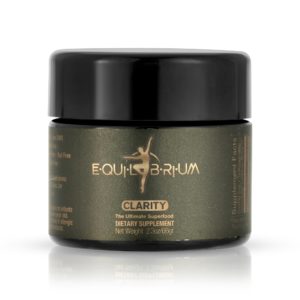Raw forest honey is often mistaken for organic honey, however, there is a notable difference. Organic honey is heated and filtered. It may be honey that has been farmed using traditional or non-conventional husbandry. Sometimes the only difference between organic and regular honey is that the latter is not pasteurized. By contrast, raw forest honey is collected from wild hives, and packaged unfiltered with no to minimum temperature alteration.
Feed The Bees
Most of the farmed honey in India uses Apis mellifera, a European honey bee species It yields 25-40 kilograms of honey a year versus the commonly farmed Indian species, Apis cerana, which yields 7-10 kilograms. Apis mellifera is more suitable from a commercial standpoint, but the drawback is the high maintenance cost. It carries pathogens and isn’t suited for high temperatures, making this species manageable only in some parts of India. Also because of the high floral density requirement, A. mellifera is mostly suited to monoculture pollination. It’s a far cry from the kind of sustainable transformation the Indian honey industry desperately needs.
“One requires a lot of effort to maintain farmed honey, and this can be seen in the taste,” says Vaibhav. “If you are farming honey you have to feed the bees, give them medicine, make sure they’re OK. In the forest, you don’t have to maintain anything. The bees go where they are comfortable each season. Forest honey will always taste different (from sample to sample).”
Apart from tasting different, raw forest honey has an impressive range of health benefits.
Forest Harvest
One of the most valuable and highly prized honey in Kodaikanal is Kusuvan thaen, produced by the Dammer bee (T. iridipennis).
“In the hills, they are almost extinct,” says Vaibhav.
You have to go deep into the forest, where there are only native trees, plants, and rare animals like giant monitor lizards, mouse-deer, and leopards. You can’t really over-harvest it because Dammer bees produce very little honey (50 – 100 millimeters per hive) so you have to find five or six hives to make it worthwhile. With Dammer bees you don’t need to leave any honey behind, only the larvae, for the bees to produce for the next season.
This honey is regarded traditionally as an effective cure for sight ailments and is applied topically over the eyelids.
In western medicine, Dammer Bee propolis (a resin-like compound produced by bees from resin, wax, essential oil, and pollen) has shown promising results as a powerful antioxidant and also promotes “potent anticancer activity”.
However, despite financial incentives for this highly valued substance, the people engaged in the Malaivalmakkal project didn’t traditionally collect propolis or beeswax. When Vaibhav proposed this harvesting practice, he was told it’s usually avoided because it causes harm to hives and bees. This is part of ancient sustainable collection knowledge that has kept an ecological balance between people and bees.
Indigenous Honey Use
Kusuvan Thaen is one of four types of raw honey collected in this region of the forest. The others are Perin Thaen (Rock Bee honey), Siru Kuchi Thaen (Stingless Bee honey), and Siru Kombu Thaen (Little Bee honey).
In the mountains, the value of locally available forest honey is widespread and diverse. Both types of Siru Thaen and Perin Thaen honey are used for their antiseptic properties, they are also an important source of nutrition.
In the month of June/July, when the hives are most full of honey, the larvae, known as Rod, are also collected. “Rod is a very important source of protein for people when they travel in the forest. This is the time when honey is mostly harvested. Siru Thaen larvae are eaten directly. Perin Thaen larvae are cooked a bit like eggs and eaten with rice”.
After the honey collecting season (June-July), they store honey with dry Amla (gooseberry). “After they add the Amla the honey absorbs it like a resin absorbs water. The dehydrated Amla becomes a very potent immunity booster and also a very strong laxative.”
Plant Pollination Matters
Raw honey taste and medicinal properties also depend on the type of plant pollinated by the bees. “Right now if I collect honey it will be coffee honey because there are lots of coffee bushes and it is flowering,” explains Vaibhav. Although forest honey will often be a mixture of pollen varities, certain dominate flowers take lead. In areas they can have significant effects on the taste, texture, and medicinal properties of honey.
“For example,” Vaibhav continues, “Kurinji flowers (Strobilanthes kunthiana) bloom only once in seven years when all the hills turn blue. I’ve collected this honey and it is a dark purple color, reflecting the brightness of Kurinji flowers.” The Palaiyar people celebrate this auspicious event with a local festival. Indigenous knowledge grounded in culture and tradition reflects a multi-layered relationship between forest products like honey and local communities. There is much to learn from sustained but peripheral practices such as this.
The Palaiyar people traditionally feed Siru Thaen to babies and toddlers. “They say it helps babies speak and prevents children from developing speech problems like stammering,” Vaibhav explains.
Ayurvedic Honey Use
Similarly, in India’s ancient medical practice, Ayurveda, care of the newborn includes placing honey and ghee (clarified butter) in the mouth of the child. It’s seen as an essential step for newborn care. However, Ayurvedic texts approach medicinal honey with a measure of caution. A major difference in using honey in western methods is that according to Ayurveda, directly heating honey is forbidden. Similarly, it should not be taken by anyone with a fever.
According to Ayurvedic texts, honey bees themselves carry poison. In raw forest honey, the multitude of flowers the bees collect have various chemicals in them that are also poisonous. Adding more heat to poison can prove to be fatal! Because of its poisonous nature, honey is recommended only in small doses. The only time honey is added in hot decoctions in Ayurvedic treatments is when the procedure requires the purgation of other administered medicines.
Ayurveda suggests small amounts of honey can be used for treating wounds and ulcers both internally and externally due to its ability to cleanse, heal, and join wounds. Internally, because of its ability to enter minute pores, it cleanses and purifies channels and especially pores. Thus it’s good for the voice, complexion, and eyes. It also improves digestion, bestows intelligence, and works as an aphrodisiac.
For The Health Of The Bees
Domesticated honey bees are endemic to Eurasia and Southeast Asia. Ancient bodies of medical literature have survived alongside prehistoric traditional and indigenous practices. There is much to learn from experience. Here, in the steep mountainous regions of Tamil Nadu, where urbanization is yet to conquer the tropical flora and fauna, there are perspectives for sustainable and mutually beneficial collection methods that take into account first the health of the bees and their hives, as well as the health of the collectors and the honey consumers.
Written By Sujata Guha and Lavrenty Repin
Sujata is an Ayurvedic or Traditional Indian physician currently residing in Kolkata, India. She is always pushing boundaries to find niches in the human mind that can dream of a more developed, subtler, and sweeter version of existence. She spent her youth in the United States, finishing high school, and college and getting a Ph.D. in Molecular Genetics. Not wholly satisfied, she returned to the country of her birth, where she raised three children and found the beauty of science, balance, and existence in no lesser a science than Ayurveda.
LavrentyRepin is an Artist-Researcher who was born into a semi-nomadic life that’s taken him from Siberia through Namibia to India on a path of many identities. His writing is motivated by two beliefs: that the answers for today’s problems are found in the past, and that there can never be ‘homelessness’ on our bountiful planet.
-
Sale Product on sale
 Equilibrium Clarity Superfood$59.45 – $330.50 — or subscribe and save 10%Rated 4.83 out of 5 based on 6 customer ratings
Equilibrium Clarity Superfood$59.45 – $330.50 — or subscribe and save 10%Rated 4.83 out of 5 based on 6 customer ratings -
 Equilibrium Energy Superfood 12 oz$115.99 — or subscribe and save 5%Rated 4.79 out of 5 based on 24 customer ratings
Equilibrium Energy Superfood 12 oz$115.99 — or subscribe and save 5%Rated 4.79 out of 5 based on 24 customer ratings




1 thought on “Medicinal Raw Forest Honey Reinvents The Indian Market Part 2”
Thank you for your sharing. I am worried that I lack creative ideas. It is your article that makes me full of hope. Thank you. But, I have a question, can you help me?